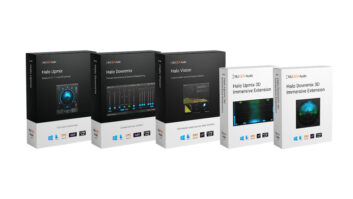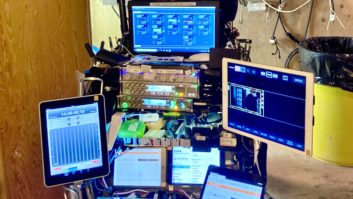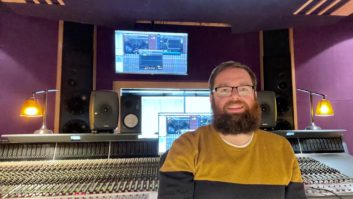SAN FRANCISCO, CALIFORNIA: When audio engineer Michael Romanowski describes the Metric Halo Mobile I/O ULN-8 interface as the “do-everything” box, he isn’t exaggerating. In fact, the ULN-8 interface is so versatile that it has become an essential component in Romanowski’s workflow, whether he is recording on location or in the studio, mixing at home, or working in his mastering facility.
“I have two that I use at the studio, and then I have several that I use for location recording,” explains Romanowski, who was recently appointed as the Chairman of the P&E Wing of the San Francisco Chapter of the National Academy of Recording Arts & Sciences. Examples of Romanowski’s location recording projects range from Americana musician Todd Snider to the American Bach Soloists, with a wide variety of rock, jazz, pop and blues performers in between.
First and foremost, says Romanowski,
“It’s extremely portable. There are a
lot of other pieces out there that are easily taken around, but for what’s in it – the microphone pres, the A-to-Ds – all in one box for mobile recording, it’s really stellar. That’s my main rig. It goes everywhere with me.”
Previously, he explains, he would have to lug around a huge rack of gear, including a computer, screen and peripherals, several eight-channel mic preamps, and a couple of boxes of converters. “What I really like now is that I can show up somewhere with two or three ULN-8s in a small rack with my laptop,” he enthuses. “I think it sounds as good as, if not better than, anything else I could put together. And along with the great sound, it is very flexible and very powerful.” But his use of the ULN-8s is not limited to location recording. “I even take them when I’m recording in the studio.”
Whatever his location, Romanowski frequently brings Metric Halo’s SpectraFoo analysis and metering software to bear on the room or the project in hand. “I check frequency responses, microphone time alignments, and room responses if I’m in a place I’m not too familiar with,” he says.
Romanowski singles out the Metric Halo mic preamps for particular praise: “They’re very fast, and very accurate with transient responses. I think that’s very important in a mic pre. I look for things that have a neutral, natural sound, rather than a colored sound, thinking I can color it later if I want to. But I don’t want to be locked into a certain tonal texture just because that’s all I can get.”
In addition, he says, “The converters sound great.” The D-to-As in the MIO ULN-8 provide an AES digital flow-through at Michael Romanowski Mastering, which is located in downtown San Francisco, where they formerly played a critical role in surround sound mastering projects until the room was recently reconfigured for stereo-only work, he reports.
Romanowski also has a mix room, where he uses several ULN-8s tied together for their conversion, summing and processing features in combination with an analog mixing console. “I really love the internal summing on the MIOConsole. I think it sounds better than any workstation out there by far. So I do submixes in there. For processing, ChannelStrip, and the EQs and compressors, and Character in the MIOConsole, are just awesome. It can be everything from super clean to adding nice tonal color.”
The power and flexibility of the MIOConsole application and Metric Halo’s extensive signal processing capabilities also plays a crucial role in the mastering room, he continues. “The flexibility of the graph in the MIO is awesome as well, being able to design my own plug-ins, and do mid-side processing or parallel processing when a project needs it.”
Romanowski reports that he doesn’t use the preset library, preferring to always start from scratch since no two projects are alike. But one new feature that has proven indispensable is the MIOConsoleConnect plug-in, which provides bi-directional communication between the host workstation and MIOConsole. “I use Sonic Studios soundBlade for mastering, so MIOConsoleConnect is great because if I make a change to somebody’s audio I can insert that in there and it keeps the Mixer that I set up locked with it. If I open the project later all of the changes I made – EQ, routing and everything I did on the Console – pop right back up,” he explains.
“That works great for mixing, too. When I work on mixes, I’ll get routing set up and some basic sounds going, and then I save a Mixer per song. Rather than having to open a Mixer every time, I use MIOConsoleConnect and every time I open that project, there’s my Mixer and all of my routing and inserts. It’s very powerful.”
ABOUT METRIC HALO Based New York’s Hudson Valley, Metric Halo provides the world with high-resolution metering, analysis, recording and processing solutions with award-winning software and hardware. www.mhlabs.com







